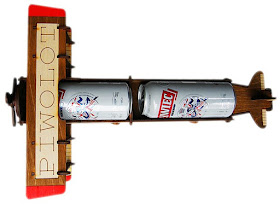Origin
Sebastian, that name is the origin of the slang word "Sebix". They also have "Alfons" here, but let me write about them at a later stage not to confuse you.
Comparison
Let me compare Sebix with the Dutch Johnnies using the following characteristics:
Outfit, posture, haircut, facial hair, accessories, tattoos, pets, music, means of transport, food, drinks, smoking, hangouts, wife or girlfriend and character.
 |
| Sebix and the Mrs |
Outfit
🇵🇱Sebix: tracksuits or jogging suits. The favorite brand is Adidas from head to toe. Alhough Puma is getting popular as well when it comes to shoes. T-shirt is mostly white and they also like to wear white sports socks and caps.
🇳🇱Sjonnie: Ditto, but they less stick to Adidas. Nike Air Max trainers. The tracksuit is either very expensive (brand name Australian) or the cheapest possible nylon style variants preferably with fluorescent colors. Alternatively a bomber jacket. They also like white sports socks and caps just like Sebix.
 |
| Sjonnies |
Posture
🇵🇱Sebix: either huge guys pumped up with steroids or skinny
🇳🇱Sjonnie: ditto. Or very skinny in combination with a massive beer belly
Haircut
🇵🇱Sebix: Very short, shaved or mohawk
🇳🇱Sjonnie: Short from above and long from the back. They use tons of hairgel.
Facial hair
🇵🇱Sebix: mostly shaved, nothing special
🇳🇱Sjonnie: moustache
Accessories
🇵🇱Sebix: Nerka (kidney bag) or lisztonoszka (letter bag, mailman bag). Gold chain with a cross and signet ring.
🇳🇱Sjonnie: Gold chain and signet ring.
Tattoos
🇵🇱Sebix: Big tribals
🇳🇱Sjonnie: names of father, mother, brothers, sisters, girlfriend(s), wive(s) and child(ren)
Pets
🇵🇱Sebix: either Pitbull kind of dogs or rat sized dogs like a Chihuahua or Yorkshire terrier. This in combination with a huge strong guy always makes me chuckle, I just cannot resist.
🇳🇱Sjonnie: Pittbulls, Bullterriers, Mastino Napoletano and other kinds of strong dogs.
Music
🇵🇱Sebix: "Pompeczki do auta" (loud house music challenging car speakers).
🇳🇱Sjonnie: Hardcore house, more bass and faster than "pompeczki".
 |
| 🇵🇱 Polski pompa 🔊 |
Means of transport
🇵🇱Sebix: Tuned older cars pimped over the top, worth more than the entire vehicle. Public transport.
🇳🇱Sjonnie: Vespa Gilera Citta mopeds, scooters or old cars pimped so ugly that your eyes hurt when looking at it. They do not wear a helmet when driving their moped or scooter.
 |
| The Sebamobile, Batman eat your heart out |
 |
| 🇳🇱 Sjonnie on his Vespa Citta Gilera |
🇵🇱Sebix: kebabs
🇳🇱Sjonnie: Fries with double mayonnaise and deep fried snacks, also with mayo.
Drinks
🇵🇱Sebix: beer
🇳🇱Sjonnie: cheap beer
Smoking
🇵🇱Sebix: a lot. Filter cigarettes, normal or slims. They also have many vapers amongst them (electronic smoking)
🇳🇱Sjonnie: a lot. Filter cigarettes, "shag"(tobacco to hand roll cigarettes) and joints. When they smoke outside they always leave a puddle of spit on the ground.
Hangouts
🇵🇱Sebix: on the streets in their trademark hangout position.
🇳🇱Sjonnie: behind a gambling machine or sitting on a beer crate at the front door of their house or elsewhere on the streets
 |
| 🇵🇱 Sebix in Fibonacci style spiral |
 |
| 🇳🇱 |
Wife or girlfriend
🇵🇱Sebix: Karyna
🇳🇱Sjonnie: Anita
 |
| Sebix & Karyna 🇵🇱 |
 |
| Sjonnie & Anita 🇳🇱 |
Character
🇵🇱Sebix: feels comfortable in the victim position, complaining and swearing a lot. Karyna is more dominant. Patriotic, hate cops.
🇳🇱Sjonnie: Swearing a lot, wearing his heart on his tongue, alpha male, Anita is less dominant. Hate cops.
Conclusion is that there are many similarities between this Polish and Dutch sub-culture, but also clear differences. I hope you liked reading it!
Conclusion is that there are many similarities between this Polish and Dutch sub-culture, but also clear differences. I hope you liked reading it!










































